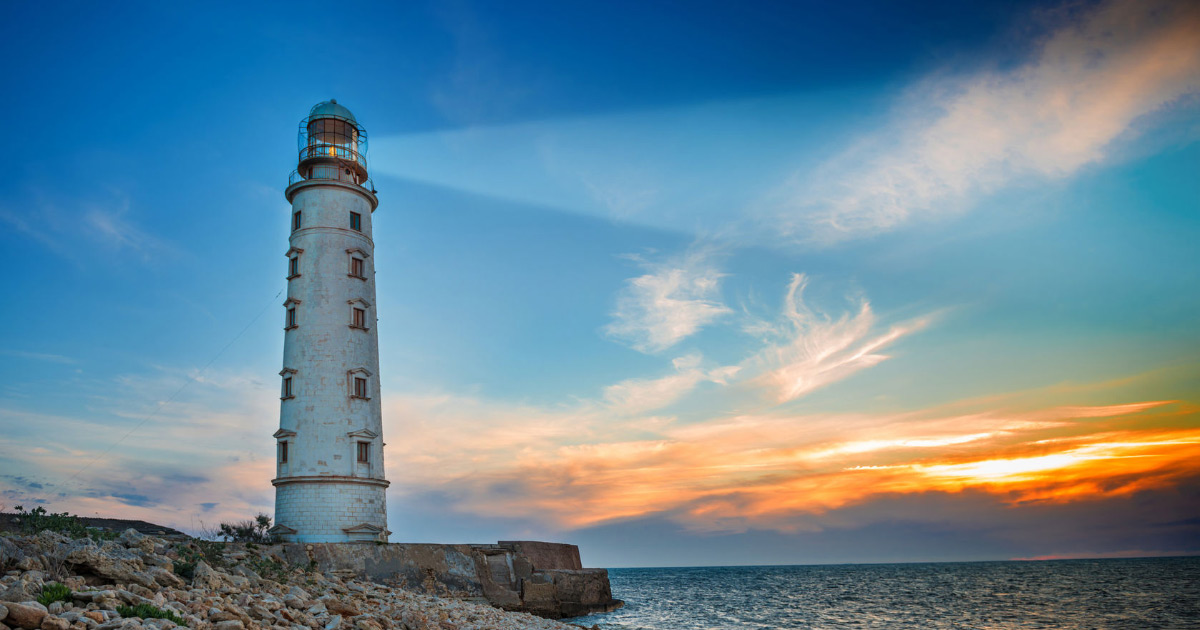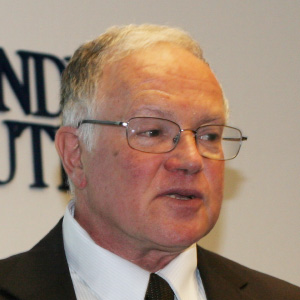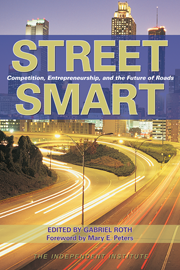- “Commerce has been bold and has searched out the dark corners of the world, but it stays longest where it is most welcomed and best entertained. Where there are light-houses there come ships; some may come where there are no lights, but with the welcome rays come the many and the richly laden.”
—Johnson, 1890, p. 2
The lighthouse has become famous in economics as a landmark case of a good that had been presumed to require provision by government due to its public nature, whereas in historical fact, as Ronald Coase (1974) pointed out in his famous article, there existed lighthouses that were financed by user fees paid by the shippers. My paper updates the study by Coase to examine how advancing technology—the “welcome rays” having now progressed to electronic guidance signals—affects the feasibility of the private-sector provision of lighthouse services and hence the theoretical justification for the optimality or necessity of government provision. Coase cited John Stuart Mill, Henry Sidgwick, A. C. Pigou, and Paul Samuelson among economists who suggested that the lighthouse required governmental provision. Coase showed how lighthouses in Great Britain have in fact been financed by user fees at harbors.
One example of private provision was the Casquets Lighthouse by Guernsey, one of the Channel Islands near France. In 1722 the owners of ships passing by dangerous rocks off the island of Alderney asked the owner of the rocks to build a lighthouse, offering to pay him according to the tonnage of the passing ships. It was erected by Thomas le Cocq, owner of the rocks (IALA, 1998, p. 103). Lighthouses in Uruguay also originally belonged to private owners (p. 62).
Defining a “public good” in the Samuelson (1954) sense of any item that impacts more than one person, and where the whole good impacts each person, whether excludable or not, lighthouses are public goods. As Coase showed, the lighthouse service is to some extent excludable when the light service is tied to entry into harbors, where a fee can be charged.
Moreover, even the fact that a service is non-excludable does not by itself make private provision infeasible, because there can be benevolent sympathetic provision (Foldvary, 1994) as well as or combined with provision due to social pressure, as occurred, for example, with the provision of 19-century toll roads in the USA (Klein, 1990). The Royal National Lifeboat Institution is to a great extent run by volunteers and has been effective in rescue services in the British Isles (Meek, 1999). Non-excludable Lighthouses could function similarly.
David E. Van Zandt (1993) counters that even though private lighthouses were built in Great Britain, including by some religious charitable providers, the government provided complementary services. (In fact, the collector would indeed have a warrant from the king.) More broadly, he states that there is governmental involvement in all goods and services. While this is true, this leaves open the question of whether even such broad involvement, along with the narrower aquatic lighting services, could be provided by more purely private enterprise if not pre-empted or even monopolized by government. A second issue is whether advancing technology provides even greater feasibility for private-sector provision.
Some Technical Elements of Lighthouse Services
A “lighthouse” is a fixed structure with an artificial light. Besides lighthouses, there were also moored lightships providing similar services where the water was too deep to construct a lighthouse; the last of the Coast Guard lightships was removed from Nantucket station in 1984 (Lighthouse Facts, 1999).
Besides light, shipping protective services have included sound, as with foghorns and sonar (high-frequency sound waves). Fog signals have included cannons, whistles, sirens, reed trumpets, bells, diaphones, and diaphragm horns. The source of light for a lighthouse is called a “lamp,” and its magnification is caused by a “lens” or “optic.” The most powerful optic has a range of 25 miles at sea. The “characteristic” refers to the type of signal, such as fixed and revolving optics, colored lights, and the intervals for flashing (Lighthouse Facts, 1999).
Ship and airplane navigation is conducted using Zulu time, usually based on a 24-hour clock. “Zulu,” the radio transmission articulation for the letter Z, refers to Universal Coordinated Time (UCT), formerly called Greenwich Mean Time.
As stated by Johnson (1890, p. 8), “The theory of coast lighting is that each coast shall be so set as each other, so that a vessel on the coast shall never be out of sight of a light, and that there shall be no dark space between the lights.” This concept implies that modern lighthouse services are not just isolated signals at dangerous protrusions or at harbors, but an organized system of navigational aids.
A nongovernmental organization, the International Association of Lighthouse Authorities (IALA), was established in 1957 to provide global coordination and information for maritime navigation aids. During the 1970s it promoted a uniform international maritime buyage system (IALA, 1988, p. 14). Currently the IALA is developing a global radio-navigation system. While the IALA works with national lighthouse administrations, it could just as well help coordinate private lighthouses.
A History of Lighthouse Technology and Provision
Historically, light dues or fees have been a primary source of revenue for lighthouses, providing evidence that it is feasible to collect charges for passage. In the first recorded instance of lighthouse collection, Edward the Black Prince, Administrator of the English Province of Guyenne in France, erected the first seamark tower on Cordouan in 1370, and the keeper was authorized to collect dues of two groats (eightpence) from all passing ships, (Blanchard, 1978, pp. 17-18). Monks had previously burned a light on Cordouan Island since 1092 (IALA, 1998, p. 136).
Prior to the adoption of the Constitution of the USA, the colonies financed lighthouses by collecting light dues or shipping taxes. The first lighthouse in North America was at Boston harbor, built in 1715. It was supported by light dues on incoming and outgoing vessels (Department, 1915, p. 14). The collector of customs obtained the fees, and since the ships could be spotted as they arrived, there was little opportunity for evasion. Virginia and Maryland continued collecting such fees as States after 1776. In 1789, all lighthouses and beacons were federalized under the control of the Secretary of the Treasury under the Act for the Establishment and Support of Lighthouses, Buoys, and Public Piers.
The Act of 1789 provided that all expenses of lighthouses and other navigational aids “shall be defrayed out of the Treasury of the United States” (Putnam, 1933, p. 31). The Light-House Board was asked why it should not be self-supporting by charging light dues. “It has uniformly responded that light should be as free as air, that its work was done not only in the interests of commerce but for the sake of science and humanity, and that it should be supported from the national treasuries as is the Army, the Navy, or as is the Coast Survey or Life-Savings Service” (Johnson, 1890, p. 112). Alexander Hamilton was responsible for terminating the light dues, telling George Washington that light should be “as free as the air” (Wheeler, 1999a). Clearly, the motive for financing U.S. lighthouses from general revenues was not that light dues were ineffective, but for ideological reasons. The French after the revolution also suppressed light dues (IALA, 1998, p. 132).
Whale oil was used with solid wicks until a parabolic reflector system was introduced around 1810. Technological advancement during the 1800s provided for more effective lighting (e.g. revolving lights) and reflectors, the Fresnel lens being invented in 1822 and implemented in the USA during the 1850s. Kerosene replaced oil during the 1870s, and electricity came to be used after 1900 (Lighthouse Facts, 1999). David Porter Heap, called the “Great Improver” of the U.S. Lighthouse Service, invented improvements such as the 5-Day Lens Lantern in 1889, better burners in 1888-92, the red color characteristic (cylinders), twinkling lights in 1890, occulting lights (obscuring at intervals) in 1890, and ball bearings in 1898 (Tag, 1999).
In 1916, the automatic bulb changer was developed (Blanchard, 1978, p. 774). In 1921, the first successful radio beacon was established in New York. Radio enabled signals to be sent specific to a station (Putnam, 1933, p. 295). By the early 1930s, radio beacons were used in conjunction with fog signals as distance-finders (Blanchard, 1978, p. 773). Since World War I, automatic lights had been eliminating the need for permanent lighthouse keepers (p. 774).
The U.S. Coast Guard obtained jurisdiction over lighthouses in 1939. Its LAMP (Lighthouse Automation and Modernization) project phased out tended lighthouses during the 1960s and 1970s (p. 776). The last remaining Coast Guard-staffed lighthouse holdout is the Boston Light Station (Going, 1999). Microwaves or telephone lines can be used to monitor automated lighthouses. Other key advances during the 1900s included radar and sonar, radar being developed during World War II. In the early 1990s, solar-powered lighthouses became economical (Wheeler, 1999a).
The Role of Government
Van Zandt (1993, p. 56) distinguishes various roles of government. The issues of whether law itself and the enforcement of property rights and contracts can be done privately goes beyond the scope of lighthouses as such. Here, the provision of law by some agency, Van Zandt’s category (1), is assumed. There are then four relevant levels of government involvement to consider: (2) government enforcement of property and contract rights; (3) government fixing of rates, establishment of monopolies, and the enforcement of collections; (4) government provision from user fees; (5) government provision from general revenues. Van Zandt claims that there is no historical example of (2), purely private provision.
Historically, according to Van Zandt, “private” provision involved government granted lighthouse owners monopolies, government-set lighthouse fees (so-called “light dues”), and governmental assistance in fee-collection enforcement. As noted by Johnson (1890, p. 113), “Payment of light dues is made to and enforced by the customs offices, and they are a lien on ship and cargo. They usually appear in the bill of port charges.” In Gibraltar, many Latin American countries, and elsewhere, light dues were directly collected by governments (p. 116). Light dues are still the source of revenues for lighthouses in Scotland and Ireland (IALA, 1998).
This reduces the impact of the Coasian conclusion. However, as Van Zandt notes, the feasibility of more purely private provision depends on the available technology. He states (p. 57), “when the available private technology of collection and exclusion is less effective than the government’s enforcement powers, one should expect government support for the collection process.” By implication, current and future technology that makes the provision more excludable, and a shift of property rights to enable lighthouse owners to charge for entry into aquatic territory, reduces the economic rationale for such government involvement.
Van Zandt (1993, p. 65) notes that the patents granted to British lighthouse keepers (or leases by Trinity House under a general monopoly patent for England and Wales) included exclusive territorial rights in exchange for paying rent. The patent also fixed the charges to the ships, Royal Navy ships being exempt, and permitted the holder to employ collectors provided by Trinity House, backed by the power of government, or use customs officials. (In 1836, Parliament empowered Trinity to buy and direct most of the lighthouses in England, which it did by 1842.)
Nevertheless, it is not clear that monopoly privileges were necessary in order to make fee collection profitable. Competition could just eliminate monopoly profits and economic rents. Or, several harbor enterprises might form an association that operates the lighthouses. Moreover, given that waterways are government property, payments for lighthouse services are part of the rules of using that government resource.
Even if the waterways were not governmental property, the ultimate use of government to enforce payments for lighthouse services is no different conceptually from the use of government courts and police powers to enforce any contract or property right.
Technology Today and Tomorrow
Current technological progress, such as global satellite-based electronic guidance signalling (Global Positioning System or GPS) combined with encryption, make electro-magnetic signalling services more excludable, hence more amenable to private provision and financing. While such services have continued to be provided by government agencies, the theoretical non-excludable public-goods argument has receded if not vanished, and the provision by government is due to inertia or political self-interest. An encrypted signal requiring a fee to unscramble creates exclusion aside from the harbor. Foghorn signals still seem to be non-excludable once provided, but since electronic and sonar guidance signals are sufficient to warn of any dangers, in principle the service of protecting shipping from the danger of protrusions can be provided entirely privately. As noted by Van Zandt (1993, p. 71), “All signs indicate that the days of lighthouses are numbered.”
It is evident that the private operation of lighthouses, including modern signalling services, would be substantially less costly than governmental operation. As one example, it costs $180,000 for the Coast Guard to paint a lighthouse (due to regulations), whereas it would only cost $40,000 under civilian private ownership (Wheeler, 1999a).
Airline navigation is going through a transition similar to that of lighthouses. Air navigation first relied on pilotage, using aeronautical charts and comparing them to visual landmarks. Dead reckoning, used when landmarks are not visible, used a clock, compass, and later also a computer to track the timing and direction. Current technology now uses VOR (Very high frequency Omnidirectional Radio) navigation and instrument landing systems as well as radar in conjunction with air route traffic control centers operated by the US government. Aircraft Navigation Systems have been moving towards the use of GPS (Brewster, 2000). Both air and sea craft have thus been moving towards electronic signals, although visual signals at the place of landing are still in use.
Conclusion
With modern satellite-based electronic guidance signalling, the possibility of encrypted signals, radar, sonar, and computerized tracking of ships, the lighthouse has become antiquated. They are now quaint tourist attractions, often with bed and breakfast (a list of publicly accessible lighthouses is available from the National Maritime Initiative). Some obsolete lighthouses are now being transferred from the U.S. Coast Guard to preservation communities and organizations. Tellingly, a picture book on lighthouses (IALA, 1998, p. 9) stat provide lighting services and collect the payments. Today, the lighthouse itself is becoming obsolete. Government is using es that “The modern mariner uses many tools to plot his course. Nevertheless, lighthouses maintain their symbolic value.”
Indeed, there are societies dedicated to the preservation of lighthouses “and their lore” for future generations (Wheeler, 1999b). The United States Lighthouse Society, with 10,000 members, is a nonprofit organization “dedicated to the preservation of lighthouse and lightships” (Silva, 1999). It sells artifacts and publishes the magazine The Keeper’s Log. Such societies also obtain grants from foundations as well as federal and state governments for historic preservation, often as matching funds. The society conducts tours of lighthouses and maintains a library of lighthouse literature. Another publication is the Lighthouse Digest.
From early times, lighthouses were financed from charges for ship passage. That governments were involved in setting and collecting fees does not alter the concept that, absent such pre-emption, private enterprise could provide radio, sonar, and other signals that could be encrypted to require payment for reception, especially in conjunction with property rights to the passage, where ships may still enter but conditional on paying the charges. As with other technological advances, the implementation of the technology that makes feasible more private provision depends on institutional changes. Even more so than when Coase made the lighthouse a famous example of a presumed governmental good that was not always historically so, it is politics, not economics, that now maintains government operation of signalling services to ships. For the lighthouses as buildings, the government is now providing historic monuments and scenic amenities rather than navigational aids.
The shipwreck problem can be remedied even more thoroughly with more extensive private property rights. If the aquatic area near the lighthouse is privately owned space, or if the governing agency asserts similar property rights, then any entrants are trespassers unless explicitly welcomed. Radar, sonar, and other electronic signals can detect the presence of intruders, and then alert them by radio that they are entering a private zone requiring payment. If the ship or boat persists in its entry, then the protective signalling is provided, and the private owner can be entitled to fine the intruder beyond the usual fees.
Such property rights may conflict with traditional law treating the oceans, even within countries’ territorial water, as commons with unrestricted and gratis passage. But that is an institutional matter that can be changed.
“Commerce . . . stays longest where it is most welcomed and best entertained . . . . [W]ith the welcome rays come the many and the richly laden.” In the 21st century, if set free to do so, private enterprise would have the incentive to more productively innovate and implement rays that would better welcome richly laden commerce.
References:
Blanchard, Leslie. 1978. A Century of Lighthouse Engineering: Technology and Institutional Politics, 1800-1900. Manuscript (available at the U.S. Lighthouse Society, San Francisco).
Bill Brewster, Bill. 2000. “Aircraft Navigation Systems to get GPS Upgrade”. ABCNEWS.com, June 14
Coase, Ronald. 1974. “The Lighthouse in Economics.” Journal of Law and Economics 17 (October): 357-76. [Reprinted 1990 in The Firm, the Market and the Law, Chicago: University of Chicago Press.]
Department of Commerce, Lighthouse Service. 1915. The United States Lighthouse Service. Washington: Government Printing Office.
Foldvary, Fred. 1994. Public Goods and Private Communities. Aldershot, UK: Edward Elgar Publishing.
“Going to Boston Next Summer? Visit Little Brewster Island’s Boston Light Station.” 1999. The Keeper’s Log XVI, no. 1 (Fall): 31.
IALA. 1998. Lighthouses of the World. Old Saybrook: The Globe Pequot Press. (Compiled by the International Association of Marine Aids to Navigation and Lighthouse Authorities.)
Klein, Daniel B. 1990. “The Voluntary Provision of Public Goods? The Turnpike Companies of Early America.” Economic Inquiry 28, no. 4 (October): 788-812.
Lighthouse Facts. 1999. San Francisco: U.S. Lighthouse Society.
Johnson, Arnold Burges. 1890. The Modern Light-House Service. Washington: Government Printing Office.
Meek, Nigel. 1999. “The Plausibility of Large-Scale, Hi-Tech, Voluntarily-Funded Emergency Organisations: The Example of the Royal National Lifeboat Institution.” Economic Notes No. 86.
National Maritime Initiative. 1999.
Putnam, George R. 1933. Lighthouses and Lightships of the United States. Boston & New York: Houghton Mifflin Co.
Samuelson, Paul A. 1954. “The Pure Theory of Public Expenditure.” Review of Economics and Statistics 36, no. 4 (November): 387-9.
Silva, Marian de. 1999. Letter to new members. San Francisco: U.S. Lighthouse Society.
Tag, Thomas A. 1999. “The Great Improver.” The Keeper’s Log XVI, no. 1 (Fall): 24-9.
Van Zandt, David E. 1993. “The Lessons of the Lighthouse: ‘Government’ or ‘Private’ Provision of Goods.” Journal of Legal Studies 22 (January): 47-72.
Wheeler, Wayne C. 1999a. Personal interview, December 7, Lighthouse Society, San Francisco. (President and founder, the U.S. Lighthouse Society.)
Wheeler, Wayne C. 1999b. Letter to new members. San Francisco: U.S. Lighthouse Society.











